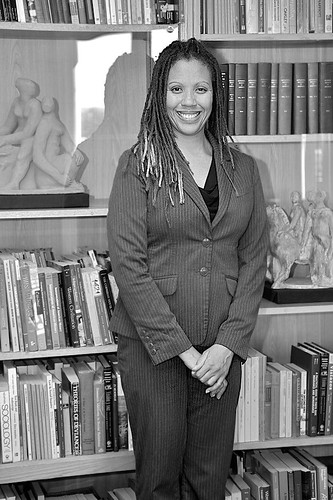
Joining Temple this fall as a visiting professor in the department of women’s studies is Siobhan Brooks-King. She brings with her a well-documented history in racial and sex-worker activism. In the ‘90s, she led a movement that resulted in the first-ever sex workers union at a strip club in San Francisco. Aside from producing academic work on women’s issues, Brooks-King was a central figure in a documentary produced on the unionizing effort.
The Temple News: Why did you come to Temple?
Siobhan Brooks-King: I came because it was in an urban campus, and prior to coming to Temple, I was at [the University of California] Santa Barbara. I had lived in New York and was looking forward to teaching at an urban campus, which would reflect my urban upbringing. I also wanted to work in Temple’s women studies department because of its reputation and to work with its faculty and graduate students.
TTN: You filed a complaint against the Lusty Lady for racial discrimination. Can you describe what you found there?
SBK: Sure. What I found was that women were being objectified differently based on their race – not everybody was being objectified in the same way.
In San Francisco, white women were dominating the clubs, and out of 10 women of color, five were black. And those black women were getting worse shifts, less security and more discrimination from the managers and customers. Although the manager was black, the club used an economic argument – white men would rather see white women than black women.
In the club there was a peep show, which was set up like an old-school peep show booth. You insert a quarter and the curtain rises for a few seconds. There was also a private pleasures booth, which cost $5 for a few minutes of time, and it seemed that men would rather pay a quarter to see a black woman in the peep show booth than $5 in the private pleasures section.
When I brought it to the attention of the managers and gathered the other women, they reversed the practices on a probationary period, but not for very long. What I actually found, which ties into my book that is coming out, is that what I found in the sex industry mirrors the gender and racial problems of other industries, that the sex industry is a microcosm of society.
TTN: You said you have a book coming out. Can you explain what it is about?
SBK: It’s called “Unequal Desire: Race and Erotic Capital in Societies.” It’s coming out Sept. 10. I interviewed dancers, bouncers and customers in lesbian and gentlemen’s clubs in the Bronx and Manhattan, and looked at the race and gender dynamics in the clubs and how black and Latino women negotiate racial problems in the club. I found that white women made more money in predominately black clubs but would rather work in a predominately white club because of the better security.
In lesbian clubs, women felt they could be more artistic because they were dancing for other women. The butch women would act more like men in their practices, so I found it was interesting how the gender roles played out.
TTN: You helped establish the nation’s first sex-worker union and pushed for the city of San Francisco to recognize sex workers as an established profession. How did you overcome that?
SBK: Prior to us unionizing, there were rights groups established in the sex industry. [There was] one called Coyote, which was a group for prostitutes, so there was a subculture to recognize sex workers.
What worked in our favor was that we were actually workers, and the Lusty Lady recognized us as employees. Prostitutes are more disorganized. You don’t need a social security card or an address, but in the Lusty Lady, we had all those things. In most other clubs, you don’t need them.
One of the reasons it’s hard for dancers to be recognized is because the club categorizes them as something of an independent contractor. The women have to pay to be on stage, just like an entertainer, which is how they get away with not having health care benefits and such.
Nadia Elkaddi can be reached at nadia.elkaddi@temple.edu.


Be the first to comment